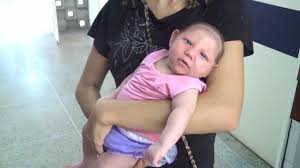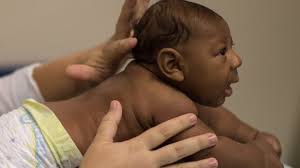HONOLULU
—As the Zika outbreak takes hold in Latin America,
researchers thousands of miles away in Hawaii are using data to figure out
where it might spread next.
In the last three months, researchers from the University of Hawaii at the Pacific Disaster Center have focused on combating the mosquito-spread virus.
So far, the Maui-based center has worked to map the spread of Zika, which can help health officials and local governments figure out where to target mosquito eradication efforts or increase access to health services.

In the last three months, researchers from the University of Hawaii at the Pacific Disaster Center have focused on combating the mosquito-spread virus.
So far, the Maui-based center has worked to map the spread of Zika, which can help health officials and local governments figure out where to target mosquito eradication efforts or increase access to health services.
Gwen Tobert, a foreign affairs officer with the State Department, said they're
using the center's products to follow how the Zika outbreak is developing and
to better understanding how it affects communities in Latin American countries.
She said their maps help officials to decide where and how to respond to the
outbreak.
The World Health Organization recently declared Zika virus a "public health emergency of international concern,'' which is linked to birth defects and has infected thousands of people in Latin America.

The World Health Organization recently declared Zika virus a "public health emergency of international concern,'' which is linked to birth defects and has infected thousands of people in Latin America.
Pacific Disaster Center Executive Director Ray Shirkhodai said his organization
is using data that's publicly available — for instance, the number of Zika
cases — as well as data on rainfall, the location of roads and airports to show
where Zika could spread.
They've also worked directly with governments in Latin American countries to gather information such as locations of hospitals and health care policies to figure out which countries could respond better to an outbreak. For instance, a map that charts data involving ambulance response as well as the number of available hospital beds and physicians shows Brazil could recover faster from a potential health crisis like Zika than Paraguay or Bolivia.

They've also worked directly with governments in Latin American countries to gather information such as locations of hospitals and health care policies to figure out which countries could respond better to an outbreak. For instance, a map that charts data involving ambulance response as well as the number of available hospital beds and physicians shows Brazil could recover faster from a potential health crisis like Zika than Paraguay or Bolivia.
"The impact has been on the ground and pretty real,'' Shirkhodai said,
adding that the center is working with government officials to figure out what
other kinds of products might be useful.In recent years, the Pacific Disaster Center has worked with agencies ranging
from the Department of Homeland Security to the Department of Defense to create
apps to map disasters. Their work has been used to direct international rescue
efforts during disasters ranging from a 2015 earthquake in Nepal to Tropical
Cyclone Winston in Fiji last month.

The Federal Emergency Management Agency works closely with the Pacific Disaster
Center to map storms and other hazards in the Pacific, said Susan Hendrick, an
agency spokeswoman. FEMA also worked with the center to understand disasters'
impact on local residents and infrastructure. During Typhoon Haiyan in the Philippines in 2014, Brian Steckler, who recently
retired as director of the Naval Postgraduate School's Hastily Formed Networks
program, said the school teamed up with the Pacific Disaster Center to help set
up Internet service for emergency responders. The groups also helped to map out
areas where the storm had damaged Internet infrastructure and phone
lines.

That information was then charted on the Pacific Disaster Center's mobile app, Disaster Aware, so emergency responders could
know where potentially dangerous areas were.
"We also let the public use laptops to be able to reach out to loved ones and tell them they're OK, or insurance companies to tell them they have a claim,'' Steckler said.
The University of Hawaii has been managing the Pacific Disaster Center since 2006, and was recently awarded a contract up to $75 million with the U.S. Department of Defense to run the center for the next five years.
"We also let the public use laptops to be able to reach out to loved ones and tell them they're OK, or insurance companies to tell them they have a claim,'' Steckler said.
The University of Hawaii has been managing the Pacific Disaster Center since 2006, and was recently awarded a contract up to $75 million with the U.S. Department of Defense to run the center for the next five years.
0 comments:
Post a Comment
Please insert your comments here